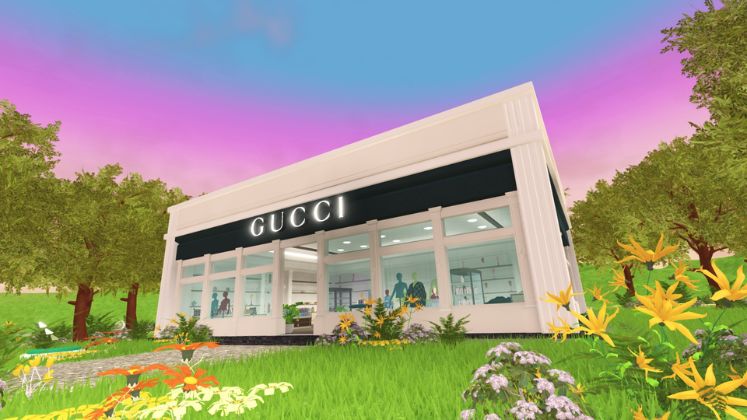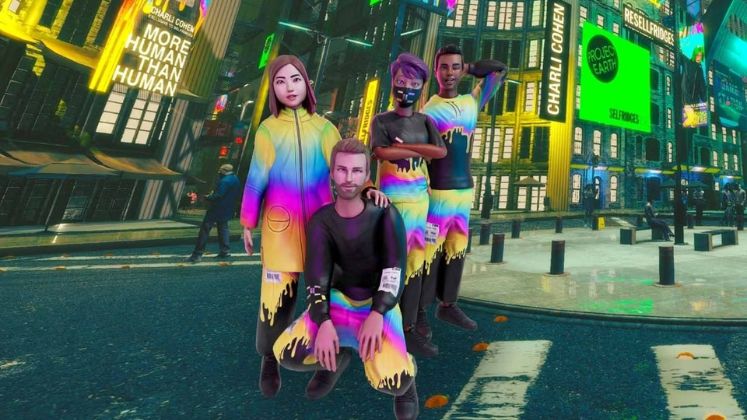Because of their increasing popularity and the possibilities for virtual sales, partnerships and influencer marketing, video games are being taken seriously by the fashion industry. There is nowadays an increasing desire for stylish virtual apparel and accessories because of the chance to connect with a new and interested audience, personalise avatars and showcase personal style. The gaming sector is valued at billions of dollars and the fashion industry now has access to new revenue streams, thanks to the growth of e-commerce. Prominent fashion retailers such as Gucci, Prada, Louis Vuitton and Moschino have ventured into the realm of virtual fashion by means of immensely popular game franchises, ranging from Roblox and other metaverse gaming platforms to The Sims and League of Legends.
Why fashion and gaming are a good fit
The relationship between identity and fashion has always been close. Customers use labels, fashion trends and apparel to visibly convey their individuality and sense of style. The same is true for gaming in many respects. Gaming and fashion also go hand in hand because both aim to give enthusiasts a world of larger-than-life, aspirational experiences.
Avatars, the virtual representations of players, take on the appearance and attire of the actual players. Think about the multiplayer shooter game Fortnite, where a player’s avatar and the ‘skins’ they choose to use to play can reveal their gaming history as well as their unique sense of style.
Most skins are purchased, just like clothing and some have a finite shelf life. Furthermore, avatars and skins can convey cultural and trend knowledge, just like clothing in the real world, which is something that young customers are eager to flaunt. When these cultures are reduced to their most basic components, the cachet of sporting a designer label is similar to that of using a prized skin to play a game.
Apart from virtual skins, the market for apparel collaborations is also quite well. Capsule collections become a hit when they’re paired with hit games. Epic Games collaborated with Japanese fast-fashion giant Uniqlo. The two teamed up to create a new apparel collection inspired by Fortnite, which launched in December 2020. The launch was a massive success, featuring characters from the game on the front (and often back) of sweatshirts, T-shirts and more.
Louis Vuitton partnered with Riot Games to design a League of Legends Capsule Collection. The collection presents the game’s theme across T-shirts, sneakers, pants, bags and select items with price tags as low as US $ 170 up to a US $ 5,600 leather jacket.
Diesel, H&M and recently, Moschino have all partnered with the Sims franchise for several capsule collections. League of Legends launched a streetwear collection with Aape by A Bathing Ape.

The gaming-fashion collaboration is also seen in the game Animal Crossing’s design that allows players to dress their avatars in Prada, Off-White, Ratberry (by Burberry) and Gucci Arcade. These projects have taken the ‘Lux x Gaming’ (luxury and gaming) world by storm and created an unlikely demographic of new gamers.
How fashion and gaming combine and collaborate
Over 3.2 billion individuals play video games globally, ranging from infrequent smartphone users to devoted PC and console owners. Even while gamers come in all different age groups, the great majority of younger viewers turn to gaming over more conventional media as their primary source of socialisation and pleasure.
Fashion brands had to swiftly think outside the box in order to reach audience during the Coronavirus pandemic. They had to move away from the typical ‘shop window’ out-of-home model into the digital world. Premium fashion label Balenciaga collaborated with the well-known battle royale game Fortnite to showcase its apparel collections through exclusive skins that could be acquired in-game.
Additionally, reports revealed that a growing number of fashion enthusiasts are becoming major gamers. According to Anzu’s study on American gamers, 76 per cent of them follow influencers and fashion companies and 66 per cent of them indulge in upscale brands. Many of the US gamers who participated in the survey turned out to be affluent buyers; 47 per cent said they bought Gucci, 43 per cent purchased Dior and 29 per cent bought Chanel.
Additionally, fashion businesses are utilising gaming in more intelligent ways than in the past. Examples include Louis Vuitton gracing League of Legends’ MOBA (Multiplayer Online Battle Arena) main stage, which attracts over 117 million monthly active players and is the fourth most popular PC game of 2022 and Prada showcasing its clothing in Ubisoft’s thrilling racing game, Riders Republic.

With League of Legends, the fourth most played PC game of 2022 and a well-known MOBA with over 117 million monthly active players, Louis Vuitton promoted its products with exclusive content.
The emergence of metaverse, which gave fashion houses ranging from high-street to high-end access to a global audience of socially conscious gamers, has been another factor driving the growth of fashion brand gaming advertising.
In Roblox, a gaming metaverse platform with over 42.3 million daily active users worldwide, Gucci famously unveiled its Gucci Garden Experience. Meanwhile, American Eagle used the platform to create its own AE Clubhouse and advertise its 2022 Spring Collection in Livetopia, one of Roblox’s top 10 experiences with over 1.5 billion visits at the time of the campaign.
Apart from games, another untapped resource which is coming into the limelight are the gamers themselves. Top gamers are new celebrities and influencers since they earn their millions from leveraging their massive online followings into endorsements, fees and sponsorships.
Ninja (Tyler Blevins) is one of the first pro-gamers to have his own sneaker collaboration. He has released his collaborative sneakers with iconic brand Adidas. His current fan following is 18.77 million on Twitch and he has 23.7 million subscribers on YouTube. His net worth in 2023 stands at US $ 17 million.
Designer Heron Preston has collaborated with Puma to design jerseys that were worn by Esports organisation Gen.G during their League of Legends World Championship.

Games: An alternative marketing strategy
The gaming industry has developed creative ways to promote their collections, such as using prominent fashion companies to outfit game characters or inserting advertisements on mobile games. Subtle marketing that is incorporated into the game and plot itself is gradually replacing traditional marketing.
Fashion brands can now choose which games, audiences and genres to target with intrinsic in-game ads, which are ad placements that are specifically created in the game environment, as opposed to being limited to expensive ‘one-off’ collaborations, thanks to the rise and adoption of in-game advertising.
Levi’s, with the help of Anzu’s in-game advertising solution, was able to advertise its 501 jeans brand range across a variety of thrilling PC and mobile games, including hugely popular titles like Trackmania, Tennis Clash and Gravity Rider Zero. This is a shining example of successful in-game ads
Due to this, Levi’s saw a 6 per cent increase in brand consideration, a 16 per cent increase in brand ad recall amongst consumers of premium jeans and nearly two-third of exposed gamers took an affirmative action after seeing the ad in-game, such as visiting the Levi’s website or shopping in its online store.
Adidas and EA Sports teamed together to provide FIFA ’22 players with a special discount on select Adidas items. These partnerships and transactions benefit both businesses. Similarly, characters were outfitted in the recognisable Balenciaga clothing through a partnership with Fortnite. Some companies are even creating exclusive, one-of-a-kind products just for those games. Certain Fortnite-branded clothing were sold in fast-fashion stores like Primark and on well-known e-commerce sites like Amazon.
The relationship between fashion and video games is becoming increasingly important and influential. Through collaborations, influencer marketing and e-commerce, the fashion industry is finding new and innovative ways to engage with players and sell products in the gaming world. The relationship between fashion and video games is expected to continue to grow and evolve in the coming years, providing exciting new opportunities for both industries.







